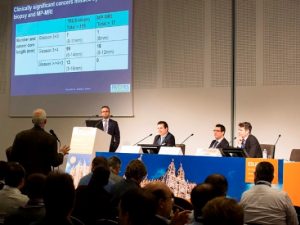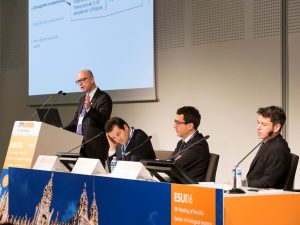New trends and the current evolution in ultrasound (US)-based technologies used in the diagnosis of prostate cancer were examined in the plenary session of the 5th EAU Section of Urological Imaging Meeting (ESUI16) held today in Milan, with experts saying that US is still rife with potentials that need to be pursued.
“Ultrasound-based imaging showed good results in the past,” said Georg Salomon (DE). “New methods and/or improvement in the techniques will increase the accuracy and will simplify the application.
Salomon discussed the various techniques such as conventional TRUS, Histoscanning, C-TRUS anna, elastography and contrast-enhanced ultrasound (CEUS) which he said still offer a range of potentials for improved diagnosis. He noted the performance of each of these techniques of sensitivity and specificity; for instance ANNA/C-TRUS has a high sensitivity of around 70% to 83% and a specificity of 64% to 77%, compared to TRUS which have a relatively sensitivity of 18% to 48% but a higher specificity of 87% to 90%.
In his closing remarks, Salomon said: “Ultrasound still is and will be the alternative to mpMRI for an accurate diagnosis of prostate cancer.”
Meanwhile, Arnoud Postema addressed the question “Multiparametric ultrasound: What holds us back?” to which Postema gave the response: “We need to do 3D acquisition that will make it easy to reconstruct the prostate. The good news is things are developing in this field. Once we have 3D acquisition then standardized and quantified classification is needed.”
He also said that combining techniques would lead to in a more effective way of employing multiparametric ultrasound. Another key aspect, according to Postema is the contribution of industry.
“Something that we really need to see is industry support, which means that several features should be in one device. Then of course we need the trials to be done,” he said. The advantage of ultrasound-based imaging, Postema added, is that the technique fits the urologist’s workflow.
“It is worth pursuing what US can do. Development is needed together with the industry,” he said. “But we need to do the studies and get the data.”




